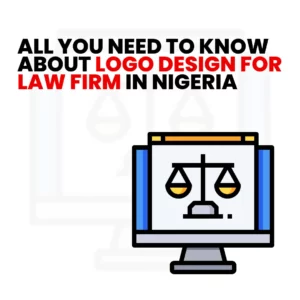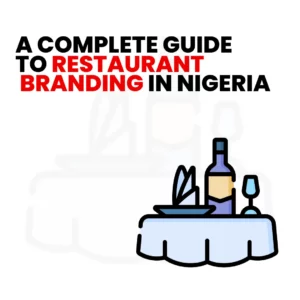In Nigeria’s active and diverse market, where businesses of various kinds and industries thrive, your brand’s identity is vital for success. As you start or grow your firm, you may realize the necessity of an engaging logo. After all, your logo conveys who you are, what you represent, and why your products are superior. Do you realize how vital market research was in creating that symbol? In this article, we’ll discuss how market research may improve your logo design process, ensuring that it resonates with your target audience, stands out, and represents your brand’s greatness in Nigeria. If you’re an entrepreneur beginning a new or established business trying to refresh your image, join us as we explore market research’s role in logo design and how it may help you succeed in Nigeria’s dynamic marketplace.

What is market research in logo design?
Whether for your business logo, product packaging, or website layout, design may convey messages, evoke emotions, and capture your brand’s spirit. However, how can you ensure that your design choices are aesthetically beautiful and meet your target audience’s needs? Market research in design helps here.
Design market research helps you learn about your target audience, industry trends, and competitors to make better design decisions. It’s like a compass that guides your design efforts to meet your target audience’s needs.
Read also: How to Create a Logo for Free in Nigeria
Why does logo design need market research?
The Nike swoosh and Apple’s apple—what comes to mind? These logos are influential icons that instantly convey meaning and familiarity. Logo design that has such an impact demands much research. Research is essential in logo design and can distinguish between a forgettable logo and a memorable company identity. Let’s discuss why research is critical in logo creation, whether you’re a business owner, designer, or logo enthusiast.
1. Getting to Know your audience
Have you considered whether your target audience likes your logo idea? Find the answer through research. Create a logo that understands your audience’s demographics, preferences, and behaviours. This connection strengthens brand-customer bonds, increasing loyalty and sales. Market research helps you understand your audience’s tastes, values, and expectations. This knowledge enables you to create a logo that connects with them instantly. Speak their visual language to make an excellent first impression and build brand loyalty.
2. Differentiating your brand
Logo research lets you examine competitors’ logos, find themes, and find differentiation chances. Research can help you find your market niche by making your logo distinctive and unique. Market research reveals your competitors’ strategies and how to differentiate. Using research data, you can create a visually unique logo that is distinctly yours, helping it stand out in the crowd.
3. Effective communication
Your logo conveys your brand’s beliefs, mission, and personality, not just its aesthetics. Research makes sure your logo conveys these elements. Research helps you choose colours, forms, and typefaces to represent trustworthiness, innovation, or playfulness. Logos are key to brand identity. It depicts your ideals, mission, and personality. You ensure your logo matches your brand’s main messages via market research. Your brand identity becomes stronger and more appealing due to this cohesiveness.
4. Avoiding cultural mistakes
Your logo can reach varied cultural audiences in a globalized environment. What’s harmless in one culture may offend another. Research helps you negotiate cultural differences so your logo doesn’t insult or alienate customers.
5. Adapting to industry trends
Design trends change, so what was popular yesterday may not be today. Research informs you of industry design trends. While being distinctive is vital, knowing these trends will help you build a modern logo.
6. Preventing design mistakes
A well-researched logo can trigger emotions and build memories. You may create an emotional logo by understanding your audience’s preferences and feelings. Research guides your design journey. It prevents you from accidentally offending your audience with design decisions. Understanding cultural sensitivities, colour psychology, and other design principles can help you build a globally appealing and error-free logo.
7 steps in conducting market research for logo design
Logo design is exciting but challenging. Your logo will represent your brand and its ideals. Market research is essential to guarantee your logo resonates with your target audience and stands out in a competitive market. Here’s how to perform logo design market research. Following these steps will help you build a fantastic logo that resonates with your customers.
- Know your audience before developing a logo. Who is your ideal client? Their hobbies, demographics, and pain points? Effective logo design starts with knowing your audience to ensure it speaks to them.
- See how your competitors use logos. What does their logo say about their brands? Determine how your logo can stand out while blending in with industry design trends.
- Direct input from your target audience is invaluable. Survey or interview people to learn what logos they like. Ask what colours, forms, and symbols make you happy. This feedback will inform your design approach.
- Keep up with industry design trends and consider your audience’s culture. Colours and symbols may have distinct meanings throughout civilizations. Your logo should be culturally sensitive and industry-appropriate.
- Based on your research, create mood boards with the feelings, colours, and styles you want your logo to express. Create numerous design ideas with these elements. Research should inspire innovation, not hinder it.
- Share your design ideas with a focus group or select audience members. Use their input to improve your logos. Take constructive criticism—it can improve you.
- Use feedback to improve your design ideas. Make numerous logos and try different details. You’ll find a logo that represents your brand and resonates with your audience.
Read also: How to Prepare a Logo Design Brief
Challenges in market research for logo design
Market research helps you design a logo that resonates with your target audience and strengthens your brand. Like any great endeavour, logo design market research has its hurdles and dangers. Below are some obstacles and dangers to help you overcome them. By knowing the probable obstacles, you can better research and produce a logo representing your brand.
- Data overuse is a common mistake in logo design market research. Data-driven judgments are critical, but creativity is too. Data overload shouldn’t hinder design. Instead, look to statistics for inspiration and guidance to unleash your creativity.
- Balancing creativity and research findings takes time and effort. Data may suggest a design direction that doesn’t match your creative vision. A balance between research and artistic intuition is crucial. Sometimes, calculated creative risks generate great results.
- Consumer tastes and market trends change quickly. Appealing yesterday may not be appealing tomorrow. Creating a timeless logo is a task. To fix this, use timeless design components that may outlast trends and represent your business.
- Confirmation bias arises when you instinctively seek and value information that supports your beliefs. This can distort research findings. Keep an open mind to research findings and design alternatives to overcome confirmation bias.
- Logos can reach multicultural audiences in a globalized society. Cultural insensitivity can cause miscommunication or offense. Avoid upsetting potential clients by researching the cultural context in which your logo will be displayed.
Best practices for effective market research in logo design
Market research will influence your logo design to ensure it resonates with your audience and accurately represents your business. Follow best practices to maximize market research in logo design. These best practices will help you undertake effective market research for a successful logo design process. Whether you’re a seasoned designer or a business owner new to logo creation, let’s explore the best practices to boost your logo.
- Effective logo design market research should integrate qualitative and quantitative methods. Quantitative data, like surveys and analytics, provide numerical insights, while qualitative methods, like interviews and focus groups, offer comprehensive input. Combining these methods gives you a complete picture of your audience’s tastes.
- Design changes constantly. Keep up with industry trends to develop a modern logo. Attend design conferences, follow design blogs, and study industry-leading logos. Trends are vital, but don’t mindlessly follow them. Use them as inspiration while retaining your brand identity.
- Market research is ongoing. Your logo may need revisions as your business and audience change to stay relevant. New market research should be done periodically to guarantee your logo matches your business and audience.
- Your competitors’ logo design successes and failures can help you. Examine their logos for similarities, distinctions, and differentiation chances. Understanding your competition enables you to place your logo for maximum impact.
- Market research should include a varied set of target audience members. Diversity ensures you get a more comprehensive range of perspectives and preferences, which helps you understand your audience’s demands.
- Prioritise customers during research. Their opinions should guide your logo design. Your logo should connect with people, not only please your tastes.
Conclusion
Market research is essential to designing logos that appeal to your target audience. Follow the tips this article recommends to guarantee your logo embodies your essence and communicates your brand’s unique character.
As a logo designer in Lagos, I understand the importance of market research for businesses in this exciting city. Your logo must wow your audience as the first point of contact. So contact me today; let’s design a logo that captures attention and boosts your brand’s presence.



